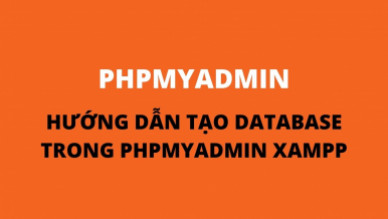If there were a type of currency that could address the issues of both fiat money and current cryptocurrencies, it could be the currency of the future. At that point, this currency would resolve the problems fiat money faces while also leveraging the advantages of cryptocurrencies, leading to more practical applications of digital currency and gradually replacing today’s paper and coin money.
For this reason, numerous central banks are currently researching and preparing to issue digital currencies, so what is a Central Bank Digital Currency (CBDC)? Read the article below to find out.
I. What is a CBDC?
CBDC (Central Bank Digital Currency) is a digital currency developed on a blockchain platform and guaranteed and issued by the central bank of a country or territory.
If you’re familiar with cryptocurrencies, you might understand a CBDC to be similar to Stablecoin USDT. However, instead of a private organization providing assurances, a CBDC is guaranteed by a country's central bank which affords it much greater trust and credibility.
II. Types of CBDC
There are two types of CBDC:
1. Wholesale CBDC
- This type is only for commercial banks and clearinghouses to use in the wholesale interbank market. Currently, these processes in many countries are inefficient, costly, time-consuming, and fraught with risk for banking partners.
- Central banks from various countries are testing this version of CBDC, including those from South Africa, Canada, Japan, Thailand, Saudi Arabia, Singapore, and Cambodia.
2. Retail CBDC
- This type is widely available to the public and functions as a replacement or supplement for cash and traditional bank deposits.
- For many countries, the advent of this digital currency could encourage more banking participation for subordinated banks, improve peer-to-peer payments, and limit illegal transaction activities. In areas where cash use is declining, it could play a crucial role in retail payment applications developed by the private sector.
- Central banks from various countries are testing this form of CBDC, including those from the Eastern Caribbean, the Bahamas, and Cambodia.
CBDCs can be issued for general use (retail CBDC) for peer-to-peer payments and from consumers to merchants, or used by commercial banks and clearinghouses (wholesale CBDC) for interbank payments.
III. Comparing CBDC, Cryptocurrency, and Fiat Money
As mentioned above, CBDCs will possess the characteristics of Fiat currency while also displaying the remarkable advantages of current digital currencies.
Here’s a comparative table:
| Major Features | Fiat Money | Cryptocurrency | CBDC |
| Government/State Regulation | Yes | No | Có |
| Counterfeitable | Yes | No | No |
| Decentralized Data | No | Yes | Yes |
| Fast, Low-cost Cross-border Transactions | No | Yes | Yes |
| High Security | No | Yes | Yes |
| Legal Protection | Yes | Không | Yes |
IV. Benefits from CBDC
Though governments remain skeptical about cryptocurrencies, it's undeniable that the use of cryptocurrency technology to create CBDCs offers significant benefits, including economic growth, financial efficiency, transactional advancements, and technological development. Some benefits include:
- Data Security: Previously, transaction data was stored in a bank's central server, susceptible to loss due to disasters. However, CBDC's use of distributed data storage makes recovery easy.
- Efficient Transactions: Payments become direct peer-to-peer transactions from sender to receiver without intermediaries, reducing costs and the need for extensive manpower. It decreases transaction errors and simplifies cross-border transactions.
- Easier Retail: Unlike traditional Fiat, there's no need for denomination in retail transactions using CBDCs. Transactions via QR codes or transfers are far safer.
- Financial Impact: CBDCs make financial tools more accessible and reduce costs for the public, also allowing financial institutions to operate more efficiently through automation and less reliance on human resources (DeFi).
- Prevent Money Laundering: State monitoring of financial activities through CBDCs makes all transactions transparent, thus helping to prevent or counteract crimes such as tax evasion, money laundering, theft, or illegal substance sales. Additionally, with controlled CBDCs, reimbursing victims of monetary loss becomes straightforward.
- Mitigate Loss Damage: Unlike other cryptocurrencies, CBDC transactions can be entirely retrieved, and CBDCs cannot be lost or physically damaged like Fiat.
- Enhanced Public Trust in Banking Systems: The transparency of transactions allows the public to check how much money has been issued and for what purposes, eliminating skepticism towards the government.
- Easier Monetary Policy Transmission: Direct distribution of money to the public lets central banks adjust supply directly rather than through indirect economic policies like interest rate changes.
Submit feedback
Your email address will not be made public. Fields marked are required *
Search
Trend
-
The most commonly used HTML tags
02-01-2020 . 11k view
-
Websites for earning money at home by typing documents
05-17-2023 . 9k view
-
Earn money by answering surveys with Toluna
01-12-2020 . 7k view
-
Guide to creating a database in phpMyAdmin XAMPP
04-25-2020 . 4k view
















0 feedback